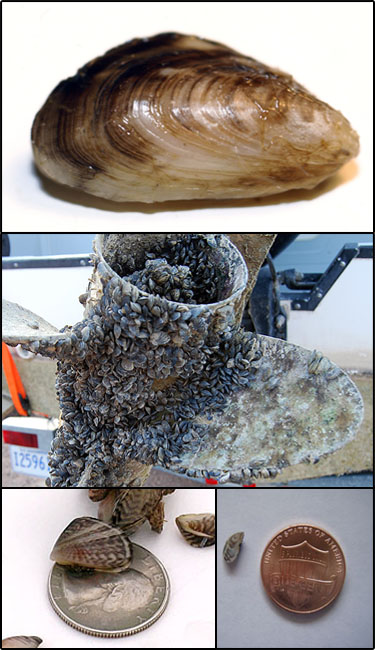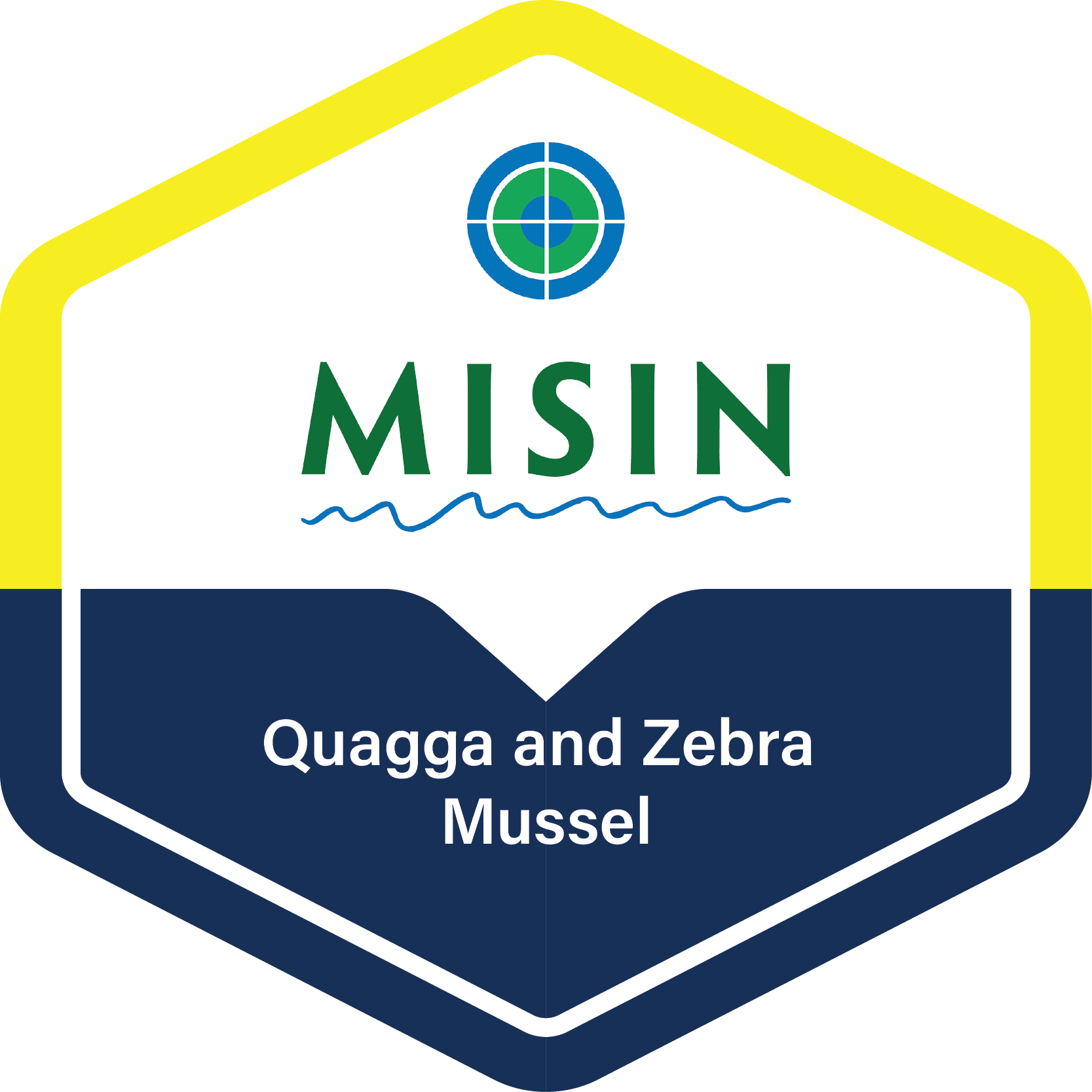Quagga mussel (Dreissena bugensis)
 Description: Introduced to North America in 1989. Established populations currently in all Great Lakes as well as in rivers or reservoirs in California, Arizona, Colorado, Utah, Nevada, New Mexico and Missouri.
Description: Introduced to North America in 1989. Established populations currently in all Great Lakes as well as in rivers or reservoirs in California, Arizona, Colorado, Utah, Nevada, New Mexico and Missouri.Identification: Small freshwater bivalve mollusk. Rounded carina between the ventral and dorsal surfaces and a convex ventral side. Color patterns vary widely with black, cream, or white bands. Typically dark concentric rings on shell, paler near hinge. Reach up to 4 centimeters. Tend to be rounder than zebra mussels.
Habitat: Native to the Dnieper River in Ukraine. Freshwater rivers, lakes and reservoirs. Inhabits both hard and soft substrates. Can colonize docks, breakwalls, buoys, boats, beaches and piping/plumbing equipment.
Reproduction: Quagga mussels are dioecious, and females can produce more than 1 million eggs in a year. A few days after fertilization, pelagic microscopic larvae develop and soon acquire minute bivalve shells. During this stage they swim freely with water currents and try to locate suitable substrate to settle on. Mortality during this transitional stage is very high and may exceed 99 percent.
Impact and Damage: Filter phytoplankton from water, decreasing the food source that zooplankton rely on and altering the food web. Filtering also increases the transparency, which can lead to increased light penetration that can change species dominance of aquatic plants. The water filtration creates waste, which can foul the environment and contains toxic pollutants. Rapid colonization has the potential to clog water intake structures and reduce pumping capabilities. Very tolerant and prolific breeders.
Similar species: Asian clam (Corbicula fluminea) and Zebra mussel (Dreissena polymorpha)
Monitoring and rapid response: oaters and anglers are urged to clean the motors and exteriors of boats, empty the bilges on boats and clean aquatic equipment to help control the zebra mussel population. Other methods include chemical molluscicides, dewatering/desiccation, steam injection, acoustical vibration, electrical current, filters and screens, coatings, toxic-constructed piping, CO2 injection, ultraviolet light, anoxia/hypoxia, flushing, and predators, parasites and disease. Awareness and education on prevention are also important to the control of zebra mussels; encouraging boaters and divers to thoroughly clean their equipment can help prevent their spread. Credits: The information contained in this factsheet was provided by the Shedd Aquarium.
Individual species images that appear with a number in a black box are courtesy of the Bugwood.org network (http://www.invasive.org). Individual photo author credits may not be included due to the small display size of the images and subsequent difficulty of reading the provided text. All other images appear courtesy of Google (http://images.google.com).
Common Name: | Quagga mussel |
Scientific Name: | Dreissena bugensis |
Family: | Dreissenidae (Freshwater bivalve) |
Habit: | Mollusks |
 View Species Course |
|
